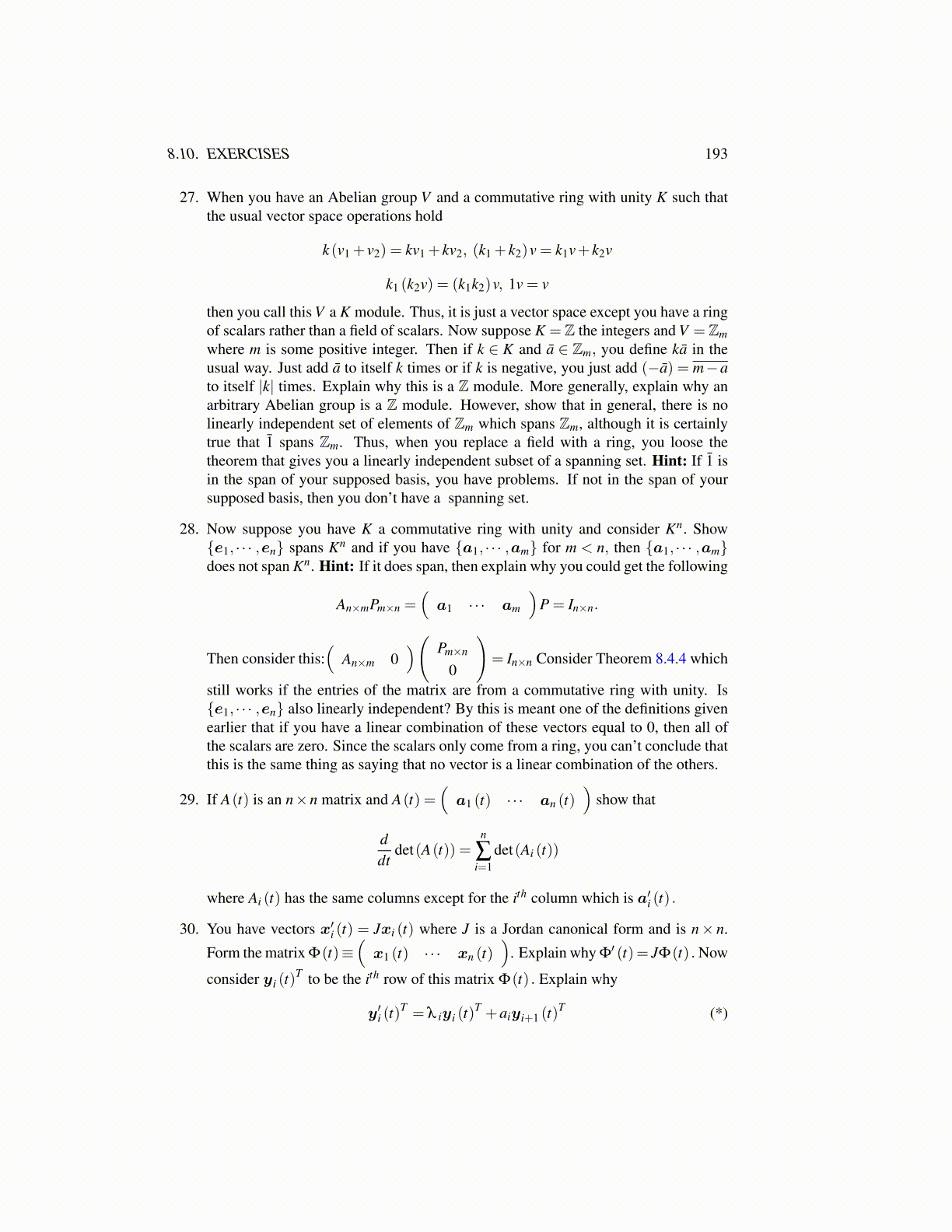
8.10. EXERCISES 193
27. When you have an Abelian group V and a commutative ring with unity K such thatthe usual vector space operations hold
k (v1 + v2) = kv1 + kv2, (k1 + k2)v = k1v+ k2v
k1 (k2v) = (k1k2)v, 1v = v
then you call this V a K module. Thus, it is just a vector space except you have a ringof scalars rather than a field of scalars. Now suppose K = Z the integers and V = Zmwhere m is some positive integer. Then if k ∈ K and ā ∈ Zm, you define kā in theusual way. Just add ā to itself k times or if k is negative, you just add (−ā) = m−ato itself |k| times. Explain why this is a Z module. More generally, explain why anarbitrary Abelian group is a Z module. However, show that in general, there is nolinearly independent set of elements of Zm which spans Zm, although it is certainlytrue that 1̄ spans Zm. Thus, when you replace a field with a ring, you loose thetheorem that gives you a linearly independent subset of a spanning set. Hint: If 1̄ isin the span of your supposed basis, you have problems. If not in the span of yoursupposed basis, then you don’t have a spanning set.
28. Now suppose you have K a commutative ring with unity and consider Kn. Show{e1, · · · ,en} spans Kn and if you have {a1, · · · ,am} for m < n, then {a1, · · · ,am}does not span Kn. Hint: If it does span, then explain why you could get the following
An×mPm×n =(
a1 · · · am
)P = In×n.
Then consider this:(
An×m 0)( Pm×n
0
)= In×n Consider Theorem 8.4.4 which
still works if the entries of the matrix are from a commutative ring with unity. Is{e1, · · · ,en} also linearly independent? By this is meant one of the definitions givenearlier that if you have a linear combination of these vectors equal to 0, then all ofthe scalars are zero. Since the scalars only come from a ring, you can’t conclude thatthis is the same thing as saying that no vector is a linear combination of the others.
29. If A(t) is an n×n matrix and A(t) =(
a1 (t) · · · an (t))
show that
ddt
det(A(t)) =n
∑i=1
det(Ai (t))
where Ai (t) has the same columns except for the ith column which is a′i (t) .
30. You have vectors x′i (t) = Jxi (t) where J is a Jordan canonical form and is n× n.
Form the matrix Φ(t)≡(
x1 (t) · · · xn (t))
. Explain why Φ′ (t)= JΦ(t) . Now
consider yi (t)T to be the ith row of this matrix Φ(t) . Explain why
y′i (t)T = λ iyi (t)
T +aiyi+1 (t)T (*)